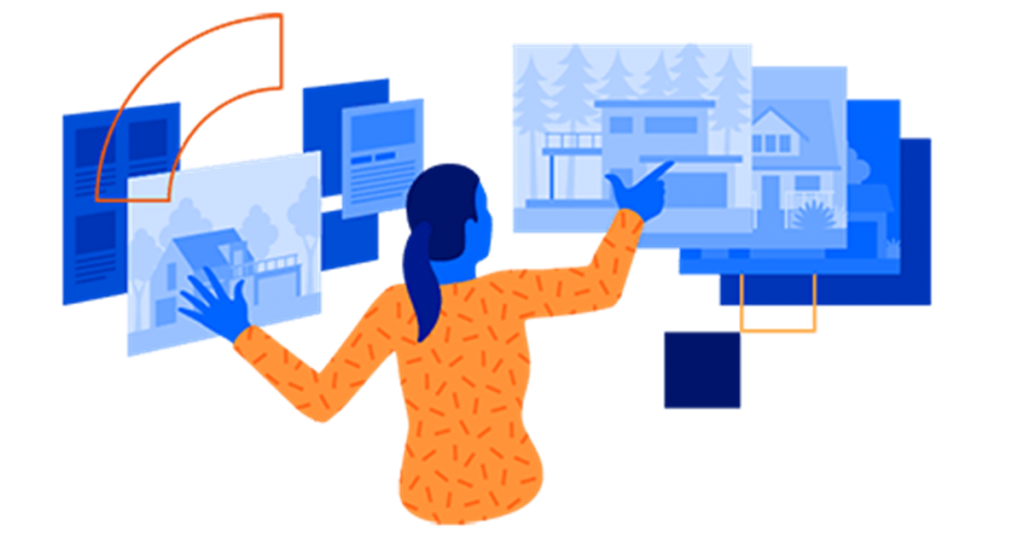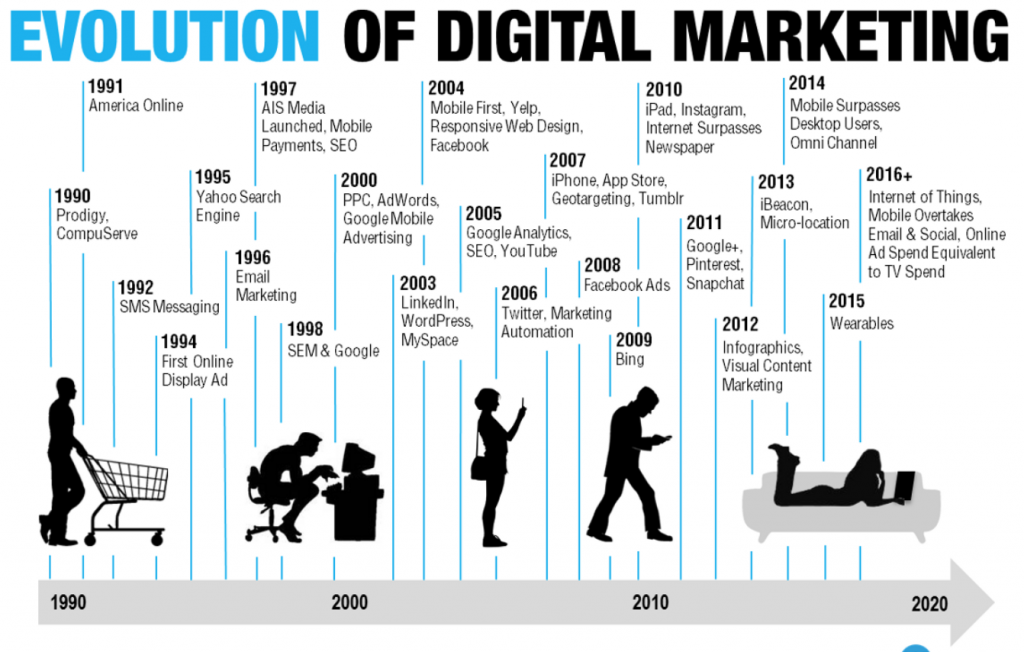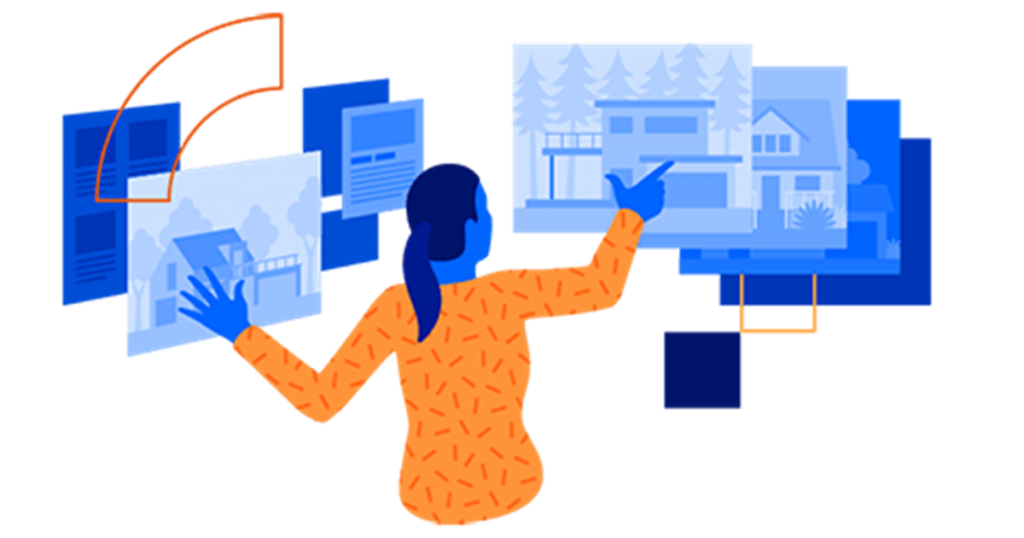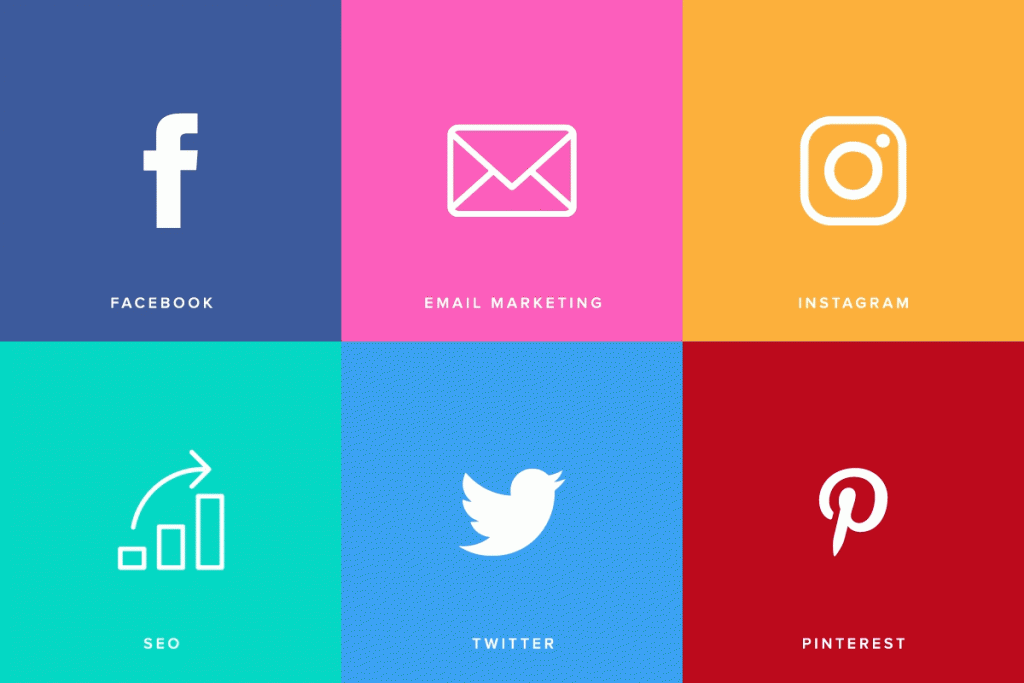History of Digital Marketing

Understanding Digital Marketing

Digital marketing is the component of marketing that uses internet and online based digital technologies such as desktop computers, mobile phones and other digital media and platforms to promote products and services. Its development during the 1990s and 2000s changed the way brands and businesses use technology for marketing. As digital platforms became increasingly incorporated into marketing plans and everyday life, and as people increasingly use digital devices instead of visiting physical shops, digital marketing campaigns have become prevalent, employing combinations of search engine optimization (SEO), search engine marketing (SEM), content marketing, influencer marketing, content automation, campaign marketing, data-driven marketing, e-commerce marketing, social media marketing, social media optimization, e-mail direct marketing, display advertising, e–books, and optical disks and games have become commonplace. Digital marketing extends to non-Internet channels that provide digital media, such as television, mobile phones (SMS and MMS), callback, and on-hold mobile ring tones. The extension to non-Internet channels differentiates digital marketing from online marketing.
History
The development of digital marketing is inseparable from technology development. One of the first key events happened in 1971, when Ray Tomlinson sent the first email, and his technology set the platform to allow people to send and receive files through different machines. However, the more recognizable period as being the start of Digital Marketing is 1990 as this was where the Archie search engine was created as an index for FTP sites. In the 1980s, the storage capacity of computers was already big enough to store huge volumes of customer information. Companies started choosing online techniques, such as database marketing, rather than limited list broker. These kinds of databases allowed companies to track customers’ information more effectively, thus transforming the relationship between buyer and seller. However, the manual process was not as efficient.
In the 1990s, the term Digital Marketing was first coined,. With the debut of server/client architecture and the popularity of personal computers, the Customer Relationship Management (CRM) applications became a significant factor in marketing technology. Fierce competition forced vendors to include more service into their software, for example, marketing, sales and service applications. Marketers were also able to own huge online customer data by eCRM software after the Internet was born. Companies could update the data of customer needs and obtain the priorities of their experience. This led to the first clickable banner ad being going live in 1994, which was the “You Will” campaign by AT&T and over the first four months of it going live, 44% of all people who saw it clicked on the ad.
In the 2000s, with increasing numbers of Internet users and the birth of iPhone, customers began searching products and making decisions about their needs online first, instead of consulting a salesperson, which created a new problem for the marketing department of a company. In addition, a survey in 2000 in the United Kingdom found that most retailers had not registered their own domain address. These problems encouraged marketers to find new ways to integrate digital technology into market development.

In 2007, marketing automation was developed as a response to the ever evolving marketing climate. Marketing automation is the process by which software is used to automate conventional marketing processes. Marketing automation helped companies segment customers, launch multichannel marketing campaigns, and provide personalized information for customers, based on their specific activities. In this way, users activity (or lack thereof) triggers a personal message that is customized to the user in their preferred platform. However, despite the benefits of marketing automation many companies are struggling to adopt it to their everyday uses correctly.

Digital marketing became more sophisticated in the 2000s and the 2010s, when the proliferation of devices’ capable of accessing digital media led to sudden growth. Statistics produced in 2012 and 2013 showed that digital marketing was still growing. With the development of social media in the 2000s, such as LinkedIn, Facebook, YouTube and Twitter, consumers became highly dependent on digital electronics in daily lives. Therefore, they expected a seamless user experience across different channels for searching product’s information. The change of customer behavior improved the diversification of marketing technology.
Digital marketing is also referred to as ‘online marketing’, ‘internet marketing’ or ‘web marketing’. The term digital marketing has grown in popularity over time. In the USA online marketing is still a popular term. In Italy, digital marketing is referred to as web marketing. Worldwide digital marketing has become the most common term, especially after the year 2013.
Digital media growth was estimated at 4.5 trillion online ads served annually with digital media spend at 48% growth in 2010. An increasing portion of advertising stems from businesses employing Online Behavioural Advertising (OBA) to tailor advertising for internet users, but OBA raises concern of consumer privacy and data protection.